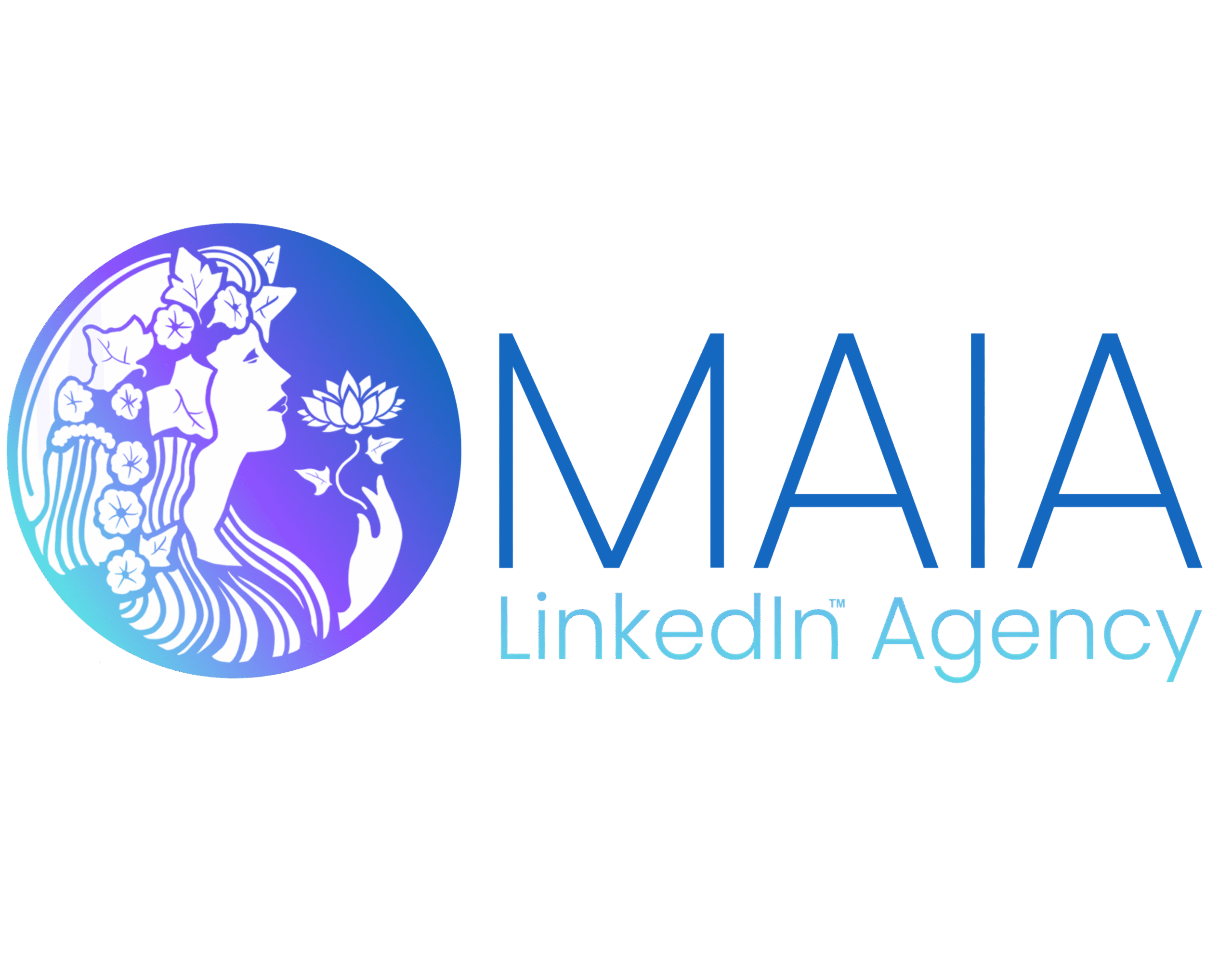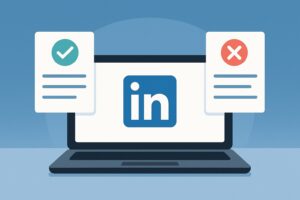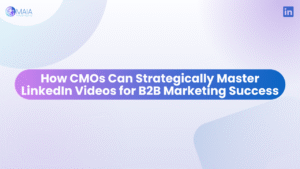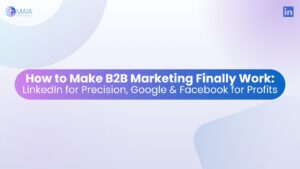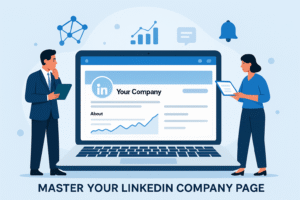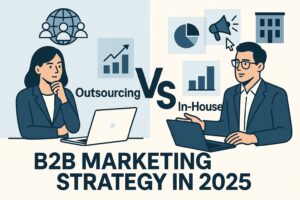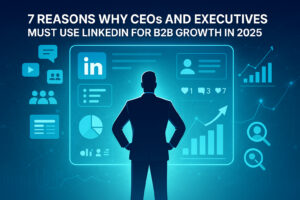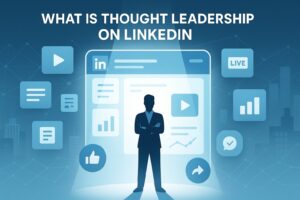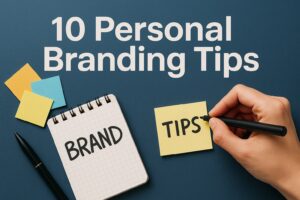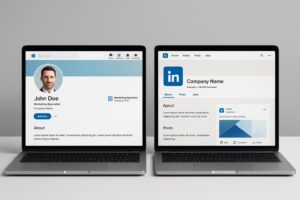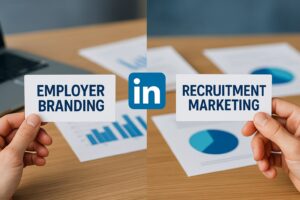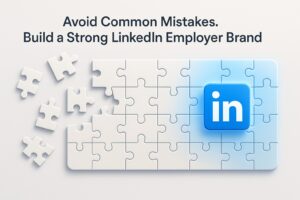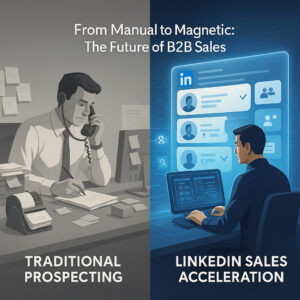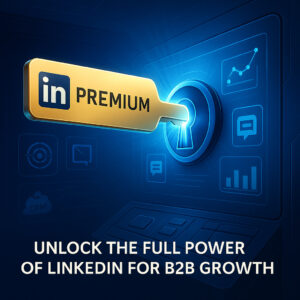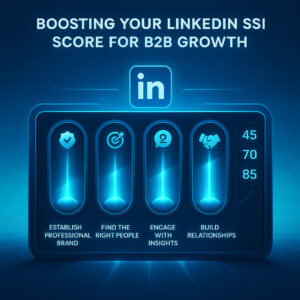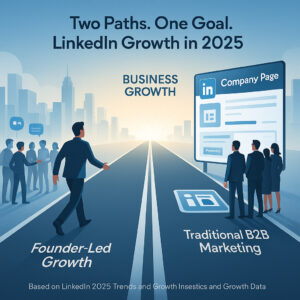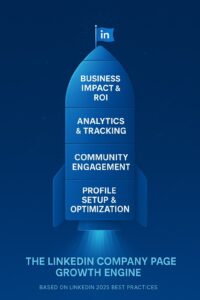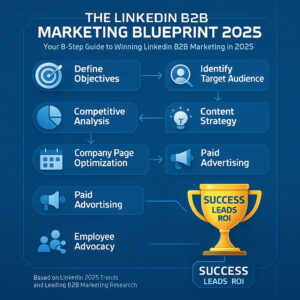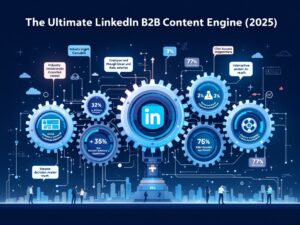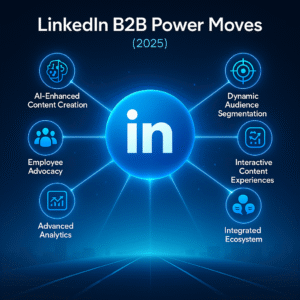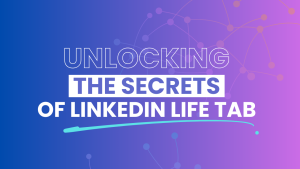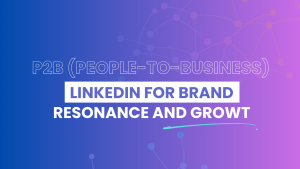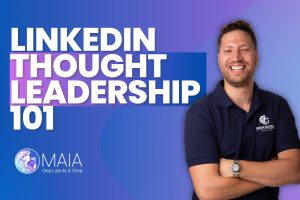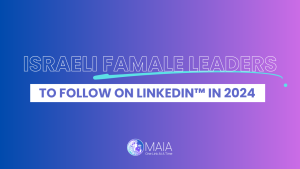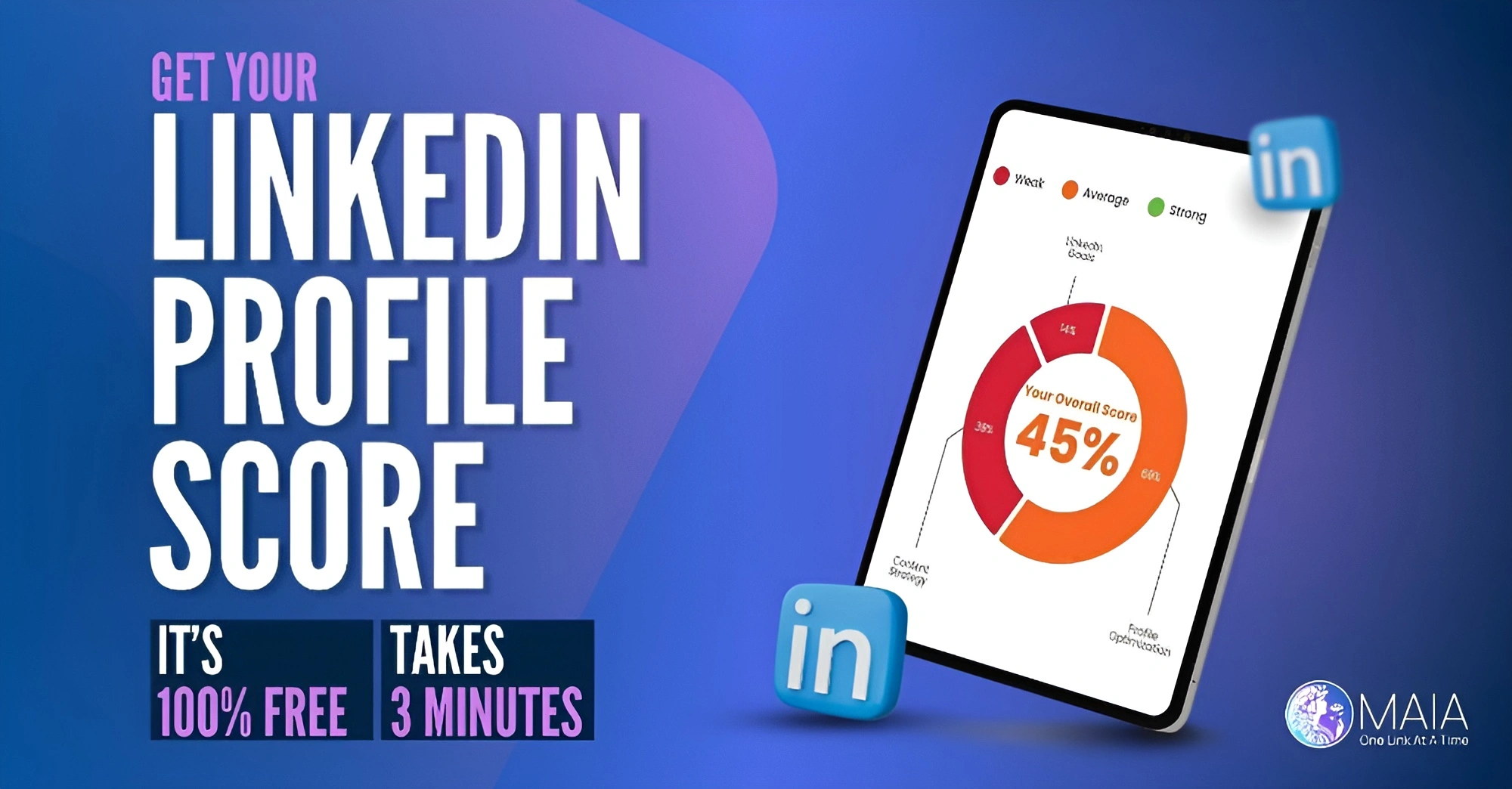7 Proven LinkedIn Marketing Strategies for B2B Companies in 2025
LinkedIn has firmly established itself as the premier platform for B2B marketing in 2025, boasting over 1 billion active professionals including 65 million decision-makers and 10 million C-suite executives. This concentration of business professionals presents unparalleled opportunities for B2B companies seeking high-value connections.
Statistical evidence reinforces LinkedIn’s dominance, with 96% of B2B marketers utilizing the platform for organic content distribution—outpacing both Facebook and Instagram for business purposes. Additionally, LinkedIn drives more than half of all social traffic to B2B websites and blogs.
This article examines seven data-backed LinkedIn marketing strategies delivering exceptional results for B2B companies in 2025, complete with actionable implementation steps and real-world examples.
1. Leverage AI-Enhanced Content Creation for Targeted Thought Leadership
AI integration has revolutionized thought leadership content development on LinkedIn. According to LinkedIn’s 2025 Content Trends Report, industry-specific insight posts generate 3.7x more engagement than general business content.
Forward-thinking B2B companies utilize AI tools to:
- Analyze top-performing industry content
- Identify emerging topics before mainstream adoption
- Create segment-specific content variations
- Optimize posting schedules based on audience activity patterns
Construction technology provider Procore Technologies exemplifies this approach, implementing AI-driven thought leadership content in late 2024. The results were significant: 128% increased engagement and 45% more qualified LinkedIn leads.
Pro tip: Effective thought leadership balances AI-assisted optimization with authentic human expertise. The most successful content maintains your brand’s unique voice while addressing specific industry pain points.
2. Harness the Power of LinkedIn’s Enhanced Employee Advocacy Programs
Employee advocacy has evolved substantially on LinkedIn, with the platform introducing specialized tools for empowering employee brand ambassadors. LinkedIn’s 2025 B2B Marketing Benchmark Report confirms that employee-shared content receives 8x more engagement than company page content alone.
Leading B2B companies implement structured advocacy programs featuring:
- Centralized content repositories for seamless employee sharing
- Gamification elements recognizing top advocates
- Training resources for personal brand development
- Comprehensive analytics measuring individual and collective impact
Enterprise software leader Workday implemented such a program in early 2025, achieving a 215% increase in content reach and 64% more inbound inquiries.
Employee Advocacy Implementation Guide
- Identify employees with established LinkedIn presence
- Develop a content calendar aligned with marketing objectives
- Create guidelines balancing brand messaging with personal authenticity
- Provide ongoing training and feedback mechanisms
- Establish meaningful recognition systems
Looking to maximize your team’s LinkedIn influence? MAIA Digital can help develop a customized employee advocacy program that empowers your team while amplifying your brand’s reach and impact.
3. Implement Dynamic Audience Segmentation for Hyper-Personalization
LinkedIn’s advertising platform has undergone significant enhancements, now offering over 200 professional targeting attributes including skill proficiency levels, technology implementation timelines, and purchasing committee roles.
The 2025 B2B Marketing Institute study demonstrates that campaigns utilizing LinkedIn’s advanced audience segmentation achieve 47% higher conversion rates and 31% lower cost-per-acquisition compared to basic targeting approaches.
Enterprise cloud provider Cloudflare recently implemented a dynamic segmentation strategy adjusting messaging based on industry, company size, and specific pain points. This resulted in 76% more qualified leads and 23% lower cost per lead.
Key Segmentation Strategies for 2025
- Intent-based targeting: Leveraging LinkedIn’s first-party data integration to identify actively researching accounts
- Decision stage segmentation: Aligning content with specific buying journey phases
- Competitive conquesting: Targeting professionals at companies using competitor solutions
- Skill-based targeting: Reaching professionals based on specific skill sets and proficiency levels
4. Create Interactive and Immersive Content Experiences
Static content effectiveness has declined significantly on LinkedIn. The platform’s algorithm now heavily prioritizes interactive formats driving meaningful engagement. LinkedIn’s Engagement Report (Q1 2025) reveals interactive posts receive 94% more comments and 73% more shares than static text posts.
High-performing B2B companies are leveraging:
- LinkedIn Live Events: Generating 7x more reactions and 24x more comments than standard video posts
- Enhanced LinkedIn Polls: Providing deeper audience insights through expanded analytics
- Document Carousels: Delivering 3x higher engagement rates than single-image posts
- Interactive Infographics: Utilizing LinkedIn’s new clickable hotspot technology
Cybersecurity firm CrowdStrike implemented interactive threat intelligence reports in early 2025, achieving 215% higher engagement and 47% more demo requests compared to previous static approaches.
Implementation tip: Focus on creating content that genuinely invites participation rather than broadcasting information. Incorporate thought-provoking questions, opinion solicitation, and opportunities for audience expertise demonstration.
5. Optimize for LinkedIn’s Conversation-Focused Algorithm
LinkedIn’s algorithm underwent a major update in late 2024, now prioritizing content generating meaningful conversations over content merely accumulating reactions. The platform evaluates conversation quality through factors including comment depth, response times, and commenter relevance.
Research from Social Media Examiner shows posts generating 5+ comments from different users receive 4x more visibility in the LinkedIn feed compared to posts with similar reaction counts but fewer comments.
Enterprise technology provider IBM implemented a conversation-first strategy with their thought leadership content, resulting in a 67% increase in organic reach and 38% longer average dwell time.
Conversation-Driving Techniques
- End posts with specific, relevant questions
- Tag relevant industry thought leaders (sparingly and authentically)
- Respond promptly to comments with thoughtful follow-up questions
- Create content addressing industry controversies or emerging trends
Need assistance optimizing your LinkedIn content strategy for maximum engagement? Contact MAIA Digital’s LinkedIn specialists to develop a conversation-driven approach tailored to your specific industry and audience.
6. Leverage LinkedIn’s Advanced Analytics for Strategic Refinement
LinkedIn has significantly expanded its analytics capabilities, providing B2B marketers with unprecedented insight into content performance, audience behavior, and conversion patterns. Companies effectively utilizing these enhanced analytics are seeing 43% improvements in campaign performance, according to LinkedIn’s 2025 ROI Report.
Key analytics focus areas for B2B companies include:
- Content Resonance Analysis: Identifying which specific elements of content drive engagement
- Audience Insight Mapping: Understanding which segments engage with which content types
- Competitive Benchmarking: Analyzing performance relative to industry peers
- Conversion Path Analysis: Tracking the full journey from engagement to lead
Software company Atlassian implemented a data-driven content optimization strategy based on LinkedIn’s advanced analytics, resulting in a 53% increase in qualified leads and 29% reduction in cost per acquisition.
7. Build Integrated LinkedIn Marketing Ecosystems
The most successful B2B companies on LinkedIn have moved beyond viewing the platform as a standalone channel, instead creating integrated ecosystems that connect LinkedIn activities with broader marketing initiatives.
According to Forrester Research, B2B companies with highly integrated LinkedIn strategies achieve 67% higher marketing-influenced revenue compared to those using LinkedIn in isolation.
Essential integration elements include:
- Synchronized content strategies across LinkedIn and owned media channels
- Seamless lead handoff processes between LinkedIn and CRM systems
- Cross-channel attribution modeling to accurately measure LinkedIn’s influence
- Coordinated messaging across paid, organic, and employee-shared content
Cloud security provider Zscaler built a comprehensive LinkedIn marketing ecosystem in Q4 2024, connecting their Sales Navigator activities, content strategy, and advertising efforts with their broader marketing technology stack. This integrated approach delivered 82% more marketing-qualified leads and 36% shorter sales cycles.
Implementation Strategy
Begin by auditing your current LinkedIn activities and identifying integration opportunities with your existing marketing technologies. Prioritize connections that enhance lead quality measurement and streamline prospect nurturing processes.
Ready to transform your LinkedIn marketing approach? Schedule a consultation with MAIA Digital’s B2B LinkedIn specialists to develop a comprehensive strategy leveraging these seven proven approaches, customized for your specific business objectives.
